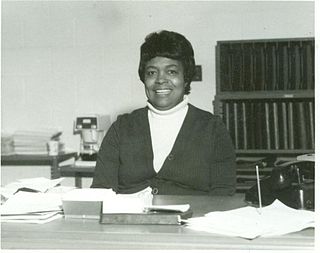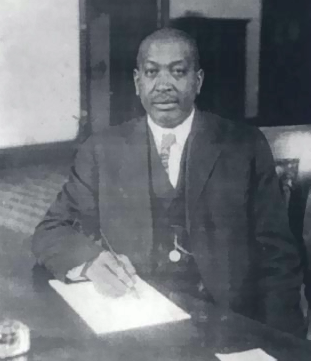Related Research Articles

Black Hawk is a home rule municipality located in Gilpin County, Colorado, United States. The city population was 127 at the 2020 United States Census, making Black Hawk the least populous city in Colorado. The tiny city is a historic mining settlement founded in 1859 during the Pike's Peak Gold Rush. Black Hawk is now a part of the Denver-Aurora-Lakewood, CO Metropolitan Statistical Area and the Front Range Urban Corridor.

Steamboat Springs is a home rule municipality that is the county seat and the most populous municipality of Routt County, Colorado. The population was 13,224 at the 2020 census. Steamboat Springs is the principal city of the Steamboat Springs Micropolitan Statistical Area, and it is the largest city in northwestern Colorado.

The region that is today the U.S. State of Colorado has been inhabited by Native Americans and their Paleoamerican ancestors for at least 13,500 years and possibly more than 37,000 years. The eastern edge of the Rocky Mountains was a major migration route that was important to the spread of early peoples throughout the Americas. The Lindenmeier site in Larimer County contains artifacts dating from approximately 8720 BCE.
Xanterra Travel Collection® is a privately owned American park and resort management company based in Greenwood Village, Colorado, controlled by entertainment magnate Philip Anschutz. Denver-based billionaire Anschutz, who has an extensive history of developing and operating mineral, railroad, newsmedia and entertainment enterprises, is one of the largest private promoters of live events in the world, most notably soccer.

Park Hill is a neighborhood in Denver, Colorado, U.S. Located in the northeastern quadrant of the city, it is bordered by Colorado Boulevard on the west, East Colfax Avenue on the south, Quebec Street on the east, and East 52nd Avenue on the north. The entire Park Hill neighborhood is located in the area known as East Denver. It is further divided by the City and County of Denver into three administrative neighborhoods, South Park Hill, North Park Hill, and Northeast Park Hill.

Frances Jacobs was born in Harrodsburg, Kentucky, to Jewish Bavarian immigrants and raised in Cincinnati, Ohio. She married Abraham Jacobs, the partner of her brother Jacob, and came west with him to Colorado where Wisebart and Jacobs had established businesses in Denver and Central City. In Denver, Frances Jacobs became a driving force for the city's charitable organizations and activities, with national exposure. Among the philanthropical organizations she founded, she is best remembered as a founder of the United Way and the Denver's Jewish Hospital Association.

American Beach is a historic beach community in northeastern Florida once popular with African-American vacationers. It is located north of Jacksonville on Amelia Island in Nassau County. During the time of segregation and the Jim Crow era, African Americans were denied access to many public amenities such as public pools and beaches in order to increase the value of nearby real estate, among other reasons. In view of this Abraham Lincoln Lewis, Florida's first black millionaire and president of the Afro-American Life Insurance Company, founded American Beach as a community that was visited mostly by African Americans, though all were welcome. It contains the American Beach Historic District, a historic district which was listed on the National Register of Historic Places in 2002.

Lincoln Park is a neighborhood and public park close to downtown Denver, Colorado and the location of the Art District on Santa Fe. The neighborhood is one of Denver's oldest and is just to the south of the area where Denver was first settled in the 1850s. Many houses date from about 1900. The neighborhood is sometimes called "La Alma/Lincoln Park" or the West Side.

Bertha Calloway was an African-American community activist and historian in North Omaha, Nebraska. The founder of the Negro History Society and the Great Plains Black History Museum, Calloway won awards from several organizations for her activism in the community and Nebraska. "I Love Black History" was the former website for the Bertha W. Calloway Center for the Research and Study of African and African-American History, Art, and Culture and the Great Plains Black History Museum before it.

Shawn Robert Adolf, Tharin Robert Gartrell and Nathan Dwaine Johnson plotted to assassinate Barack Obama, then the 2008 Democratic Party presidential nominee. The trio allegedly planned to shoot Senator Obama with a high-powered rifle during the Democratic National Convention in Denver, Colorado.

Winks Panorama, also known as Winks Lodge, was a hotel near Pinecliffe, Colorado catering to African-American tourists during the early and middle 20th century. The lodge was built in the Lincoln Hills Country Club, which was at the time the only African-American resort in the western United States. The Lincoln Hills club was organized in 1922, selling lots with payments as low as $5.00 down and $5.00 per month. The lodge was built by Obrey Wendell "Winks" Hamlet in 1928. Hamlet had been involved in the original club project, and had been assembling land for a lodge since 1925. The Wall Street Crash of 1929 caused many lots in Lincoln Hills to be abandoned, but Hamlet promoted the lodge nationally through advertisements in Ebony and attracted a clientele from the eastern United States.

The Negro Motorist Green Book was an annual guidebook for African American roadtrippers. It was originated and published by African American New York City postal worker Victor Hugo Green from 1936 to 1966, during the era of Jim Crow laws, when open and often legally prescribed discrimination against African Americans especially and other non-whites was widespread. Although pervasive racial discrimination and poverty limited black car ownership, the emerging African American middle class bought automobiles as soon as they could, but faced a variety of dangers and inconveniences along the road, from refusal of food and lodging to arbitrary arrest. In response, Green wrote his guide to services and places relatively friendly to African Americans, eventually expanding its coverage from the New York area to much of North America, as well as founding a travel agency.

William N. Bowman was a prolific architect in Colorado.

Oliver Toussaint Jackson was an American businessman and entrepreneur, who, inspired by Booker T. Washington's autobiography Up from Slavery, formed Dearfield, Colorado, a self-sufficient agricultural settlement for African-Americans. Prior to this venture, Jackson was a successful owner of several restaurant and catering businesses in Denver and Boulder.

Julia Greeley, OFS, was an African-American philanthropist and Catholic convert. An enslaved woman later freed by the US government, she is known as Denver's "Angel of Charity" because of her aid to countless families in poverty. Her cause for beatification was opened by Archbishop Samuel J. Aquila in 2016.

The history of slavery in Colorado began centuries before Colorado achieved statehood when Spanish colonists of Santa Fe de Nuevo México (1598–1848) enslaved Native Americans, called Genízaros. Southern Colorado was part of the Spanish territory until 1848. Comanche and Utes raided villages of other indigenous people and enslaved them.

During the decades of segregation in the United States, African Americans established various resorts. The resorts were self-contained commercial establishments. Varying resort accommodations included rooms for rent, meals and fine food, cocktail bars, dancing, sporting facilities, and beaches. Also in some cases entire communities were known as resort areas for African Americans. The Negro Motorist Green Book helped guide African Americans to accommodating and safe places, including Idlewild, Michigan, which was among the most well known.
References
- 1 2 3 4 5 6 7 "Lincoln Hills Country Club". Denver Public Library History. 2017-09-20. Retrieved 2019-06-29.
- 1 2 "A Proud Heritage". Lincoln Hills Cares. Retrieved 2019-06-29.
- ↑ "Lincoln Hills | Conflict | Rocky Mountain PBS". Lincoln Hills | Conflict | Rocky Mountain PBS. Retrieved 2019-07-06.
- 1 2 3 4 5 "Lincoln Hills History". www.historiclincolnhills.com. Retrieved 2019-06-29.
- ↑ Post, Claire Martin | The Denver (2009-02-14). "A resort to remember". The Denver Post. Retrieved 2019-07-06.
- 1 2 3 4 yongli (2016-08-29). "Lincoln Hills". coloradoencyclopedia.org. Retrieved 2019-06-29.
- 1 2 "During Segregation, A Mountain Oasis Gave Black Families A Summer Escape". NPR.org. Retrieved 2019-07-06.
- ↑ "Lincoln Hills Country Club (1922-1966) • BlackPast". BlackPast. 2007-09-29. Retrieved 2019-07-06.
- ↑ "Welcome to Lincoln Hills Cares. We create unforgettable Colorado experiences". Lincoln Hills Cares. Retrieved 2019-07-06.